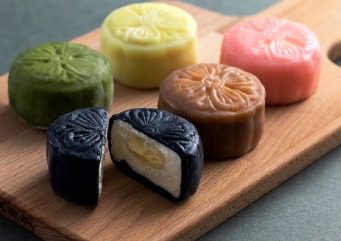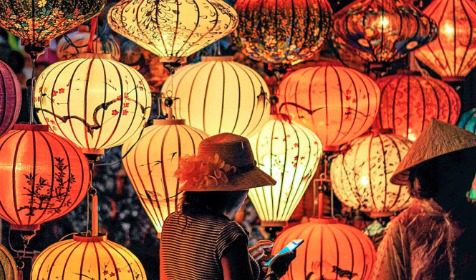The mooncake, that dense round pastry synonymous with the Mid-Autumn Festival, has undergone a remarkable transformation that mirrors China’s own journey from tradition to modernity. What began as a simple ceremonial offering has evolved into a canvas for culinary innovation, reflecting changing social values, technological advancements, and cross-cultural exchanges. This edible artifact of Chinese culture reveals much about how traditional societies negotiate modernity while preserving cultural essence.

Traditional mooncakes were designed as much for symbolism as for sustenance. The classic Cantonese-style mooncake, with its golden-brown crust imprinted with intricate patterns, contains a rich filling of sweet lotus seed paste and salted duck egg yolks. This combination was never accidental – the round shape mirrors the full moon, the yolks represent its luminosity, while the sweetness symbolizes life’s blessings. The making of these mooncakes was an exacting art: lotus seeds required twelve meticulous processing steps to achieve the desired silken texture, while the pastry demanded precise control of temperature and humidity to create the characteristic glossy sheen.
The seismic shift came in 1989 when Hong Kong’s Peninsula Hotel introduced the snowskin mooncake. This revolutionary version discarded baking altogether, using glutinous rice flour to create a chilled, chewy exterior that could be stored refrigerated. More than just a technical innovation, this represented the first major departure from centuries-old conventions. The snowskin’s lighter texture and lower sugar content appealed to urban consumers increasingly concerned about health, while its pastel colors and delicate flavors (like green tea and mango) catered to modern aesthetic sensibilities. Significantly, this innovation emerged from Hong Kong – a cultural crossroads where Eastern traditions comfortably coexisted with Western influences.

The true game changer arrived in the early 21st century with the advent of the molten custard mooncake. Master pastry chefs combined French patisserie techniques with traditional Chinese ingredients to create a centerpiece that literally flows when broken open. The “lava” effect, achieved through careful temperature control of milk, butter, and salted egg yolk, created an entirely new sensory experience. This innovation proved particularly timely, coinciding with the rise of social media where visually striking foods gained viral appeal. The molten custard mooncake didn’t just taste different – it transformed mooncake consumption into a performative act, with the “flow” moment becoming as culturally significant as the eating itself.

Contemporary variations continue pushing boundaries while revealing fascinating cultural adaptations. In Taiwan, local specialties like pineapple cakes have been reinterpreted as “Taiwanese-style mooncakes,” asserting cultural distinctiveness through familiar forms. Singaporean durian mooncakes incorporate Southeast Asia’s “king of fruits,” demonstrating how diaspora communities adapt traditions to local palates. Shanghai’s innovative “xian dou xian” mooncake stuffs the pastry with a savory filling traditionally served in soup, blurring the line between festival food and everyday cuisine.
The packaging evolution tells an equally compelling story. Where mooncakes were once simple offerings wrapped in red paper, contemporary versions appear in elaborate gift boxes featuring interpretations of classical Chinese paintings or modernist designs. Beijing’s Palace Museum has even created mooncake tins reproducing patterns from imperial porcelain, transforming the container into a cultural artifact in its own right. This shift from edible focus to experiential packaging reflects changing gift-giving practices in an increasingly affluent society.
Beneath these gastronomic innovations lies a deeper cultural negotiation. The mooncake’s metamorphosis represents how traditional societies preserve cultural continuity through creative adaptation rather than rigid preservation. Each new variation – whether it’s a low-sugar version for health-conscious consumers or a champagne truffle filling for luxury markets – extends the mooncake’s relevance while maintaining its symbolic connection to family reunion and lunar worship.
From imperial China’s moon worship ceremonies to today’s globalized dessert innovations, the mooncake’s journey encapsulates a civilization’s remarkable ability to reinvent its traditions while keeping their essence intact. As these pastries continue evolving – appearing in vegan versions, alcohol-infused editions, or even deconstructed interpretations – they remain, fundamentally, edible embodiments of cultural resilience. The mooncake endures not despite its transformations, but precisely because of them, proving that tradition thrives not through stasis, but through thoughtful, continuous reinvention.


Be the first to comment